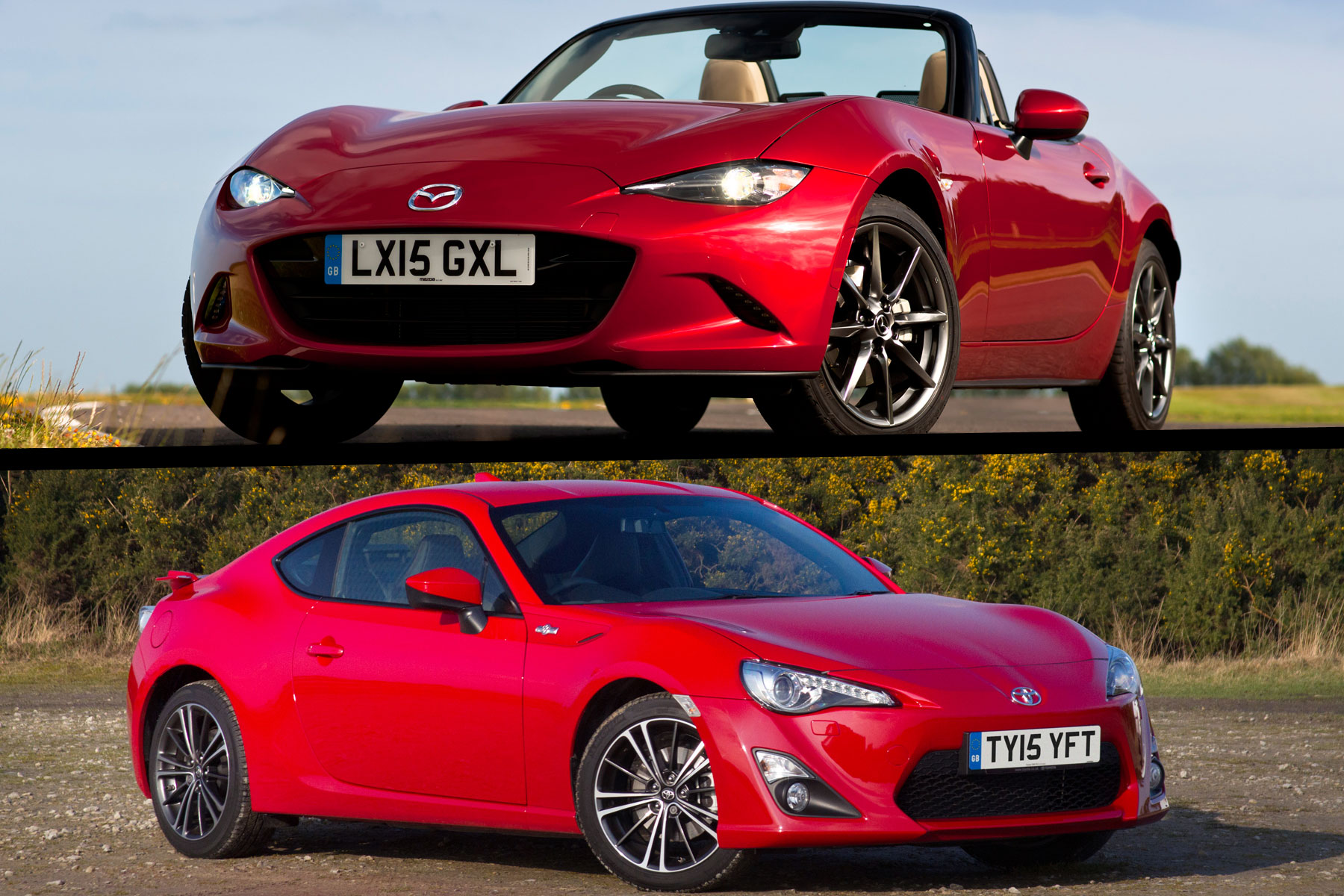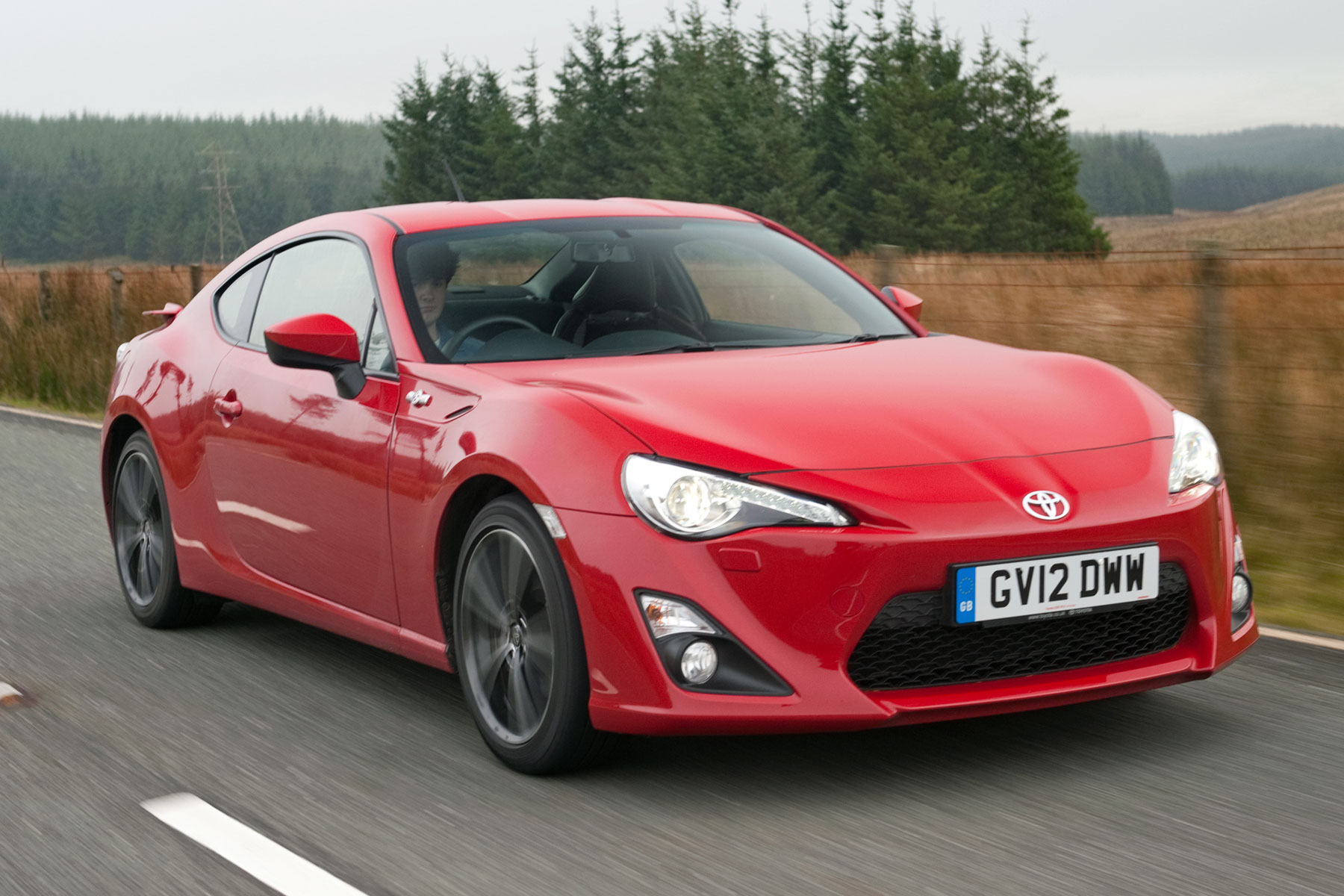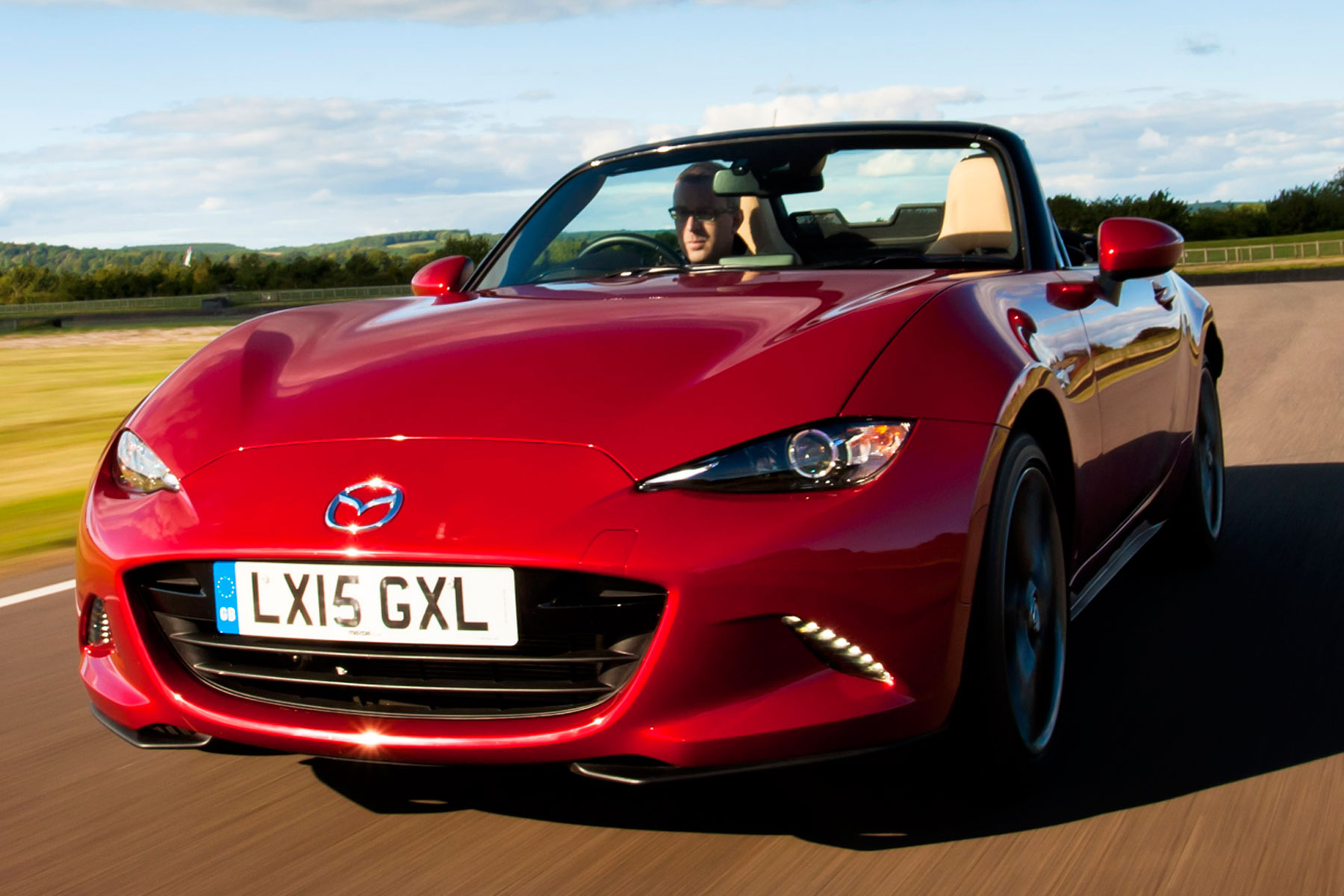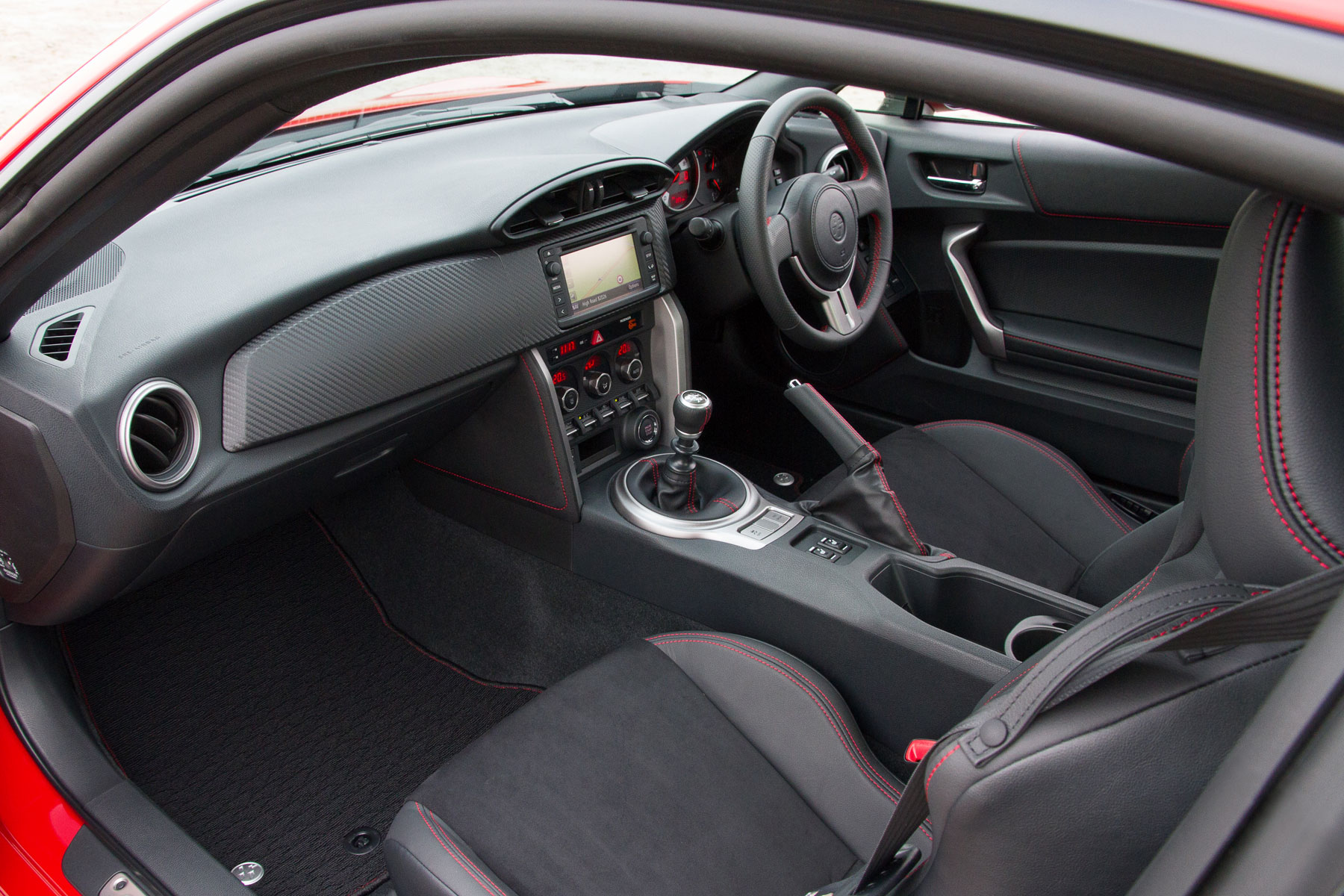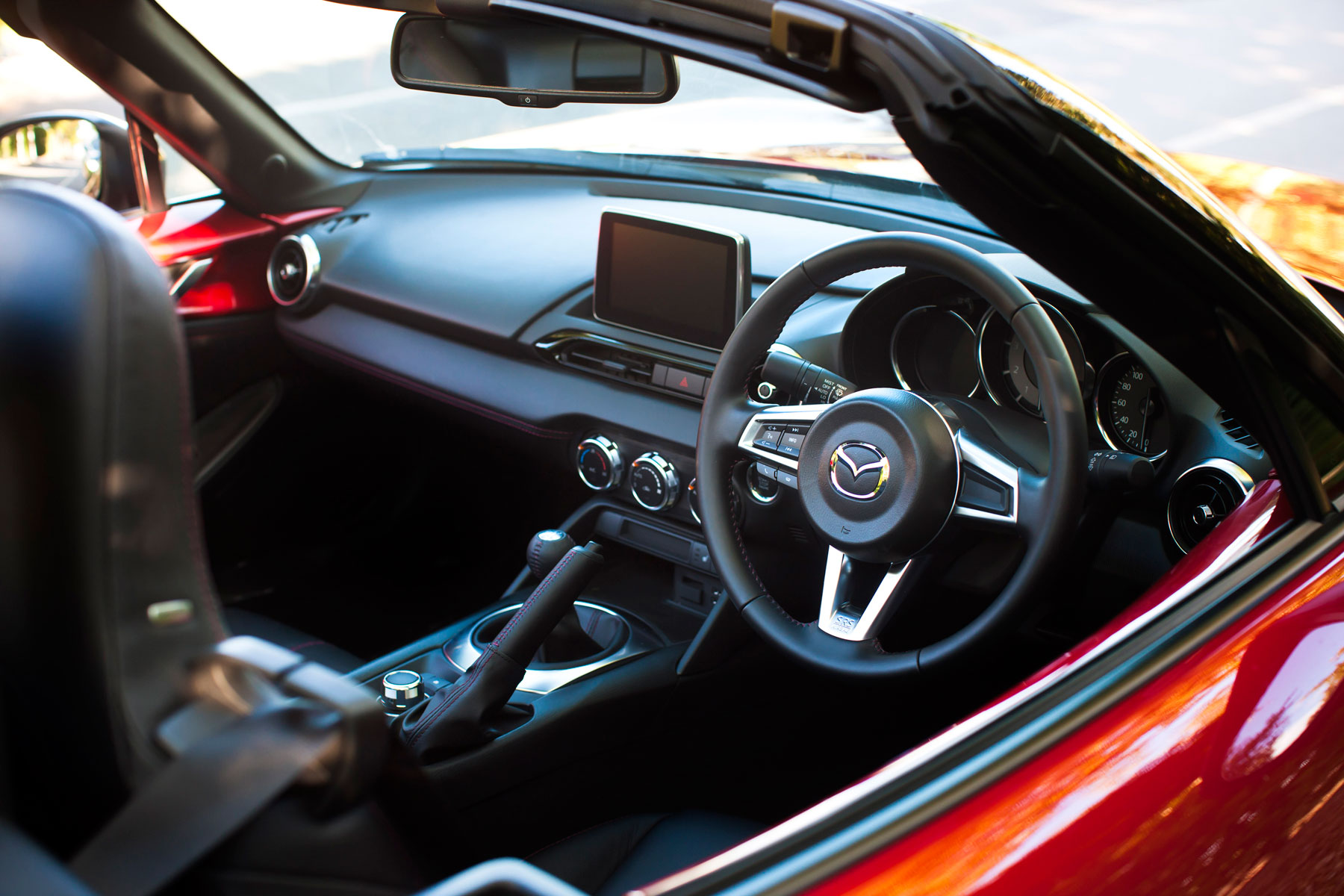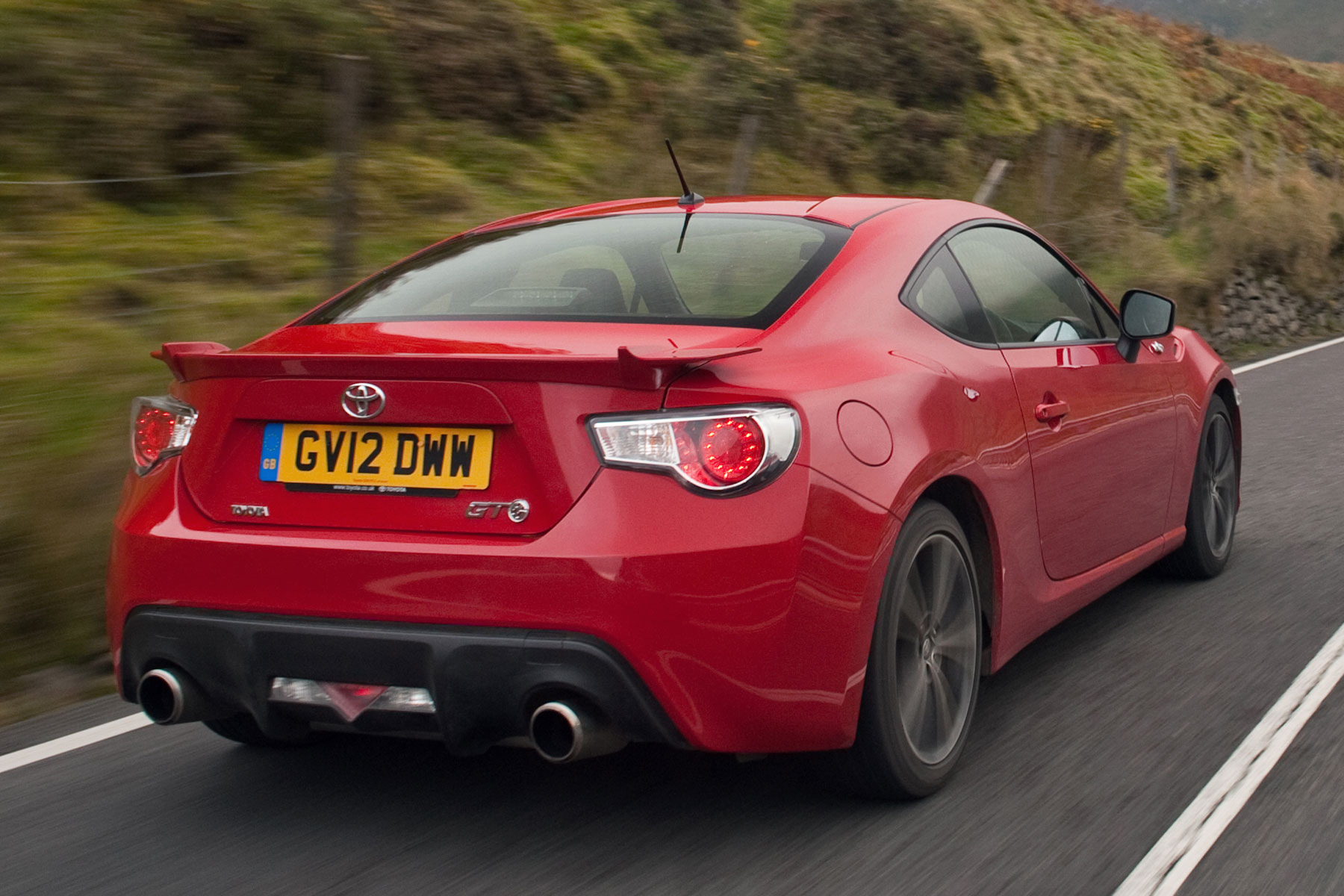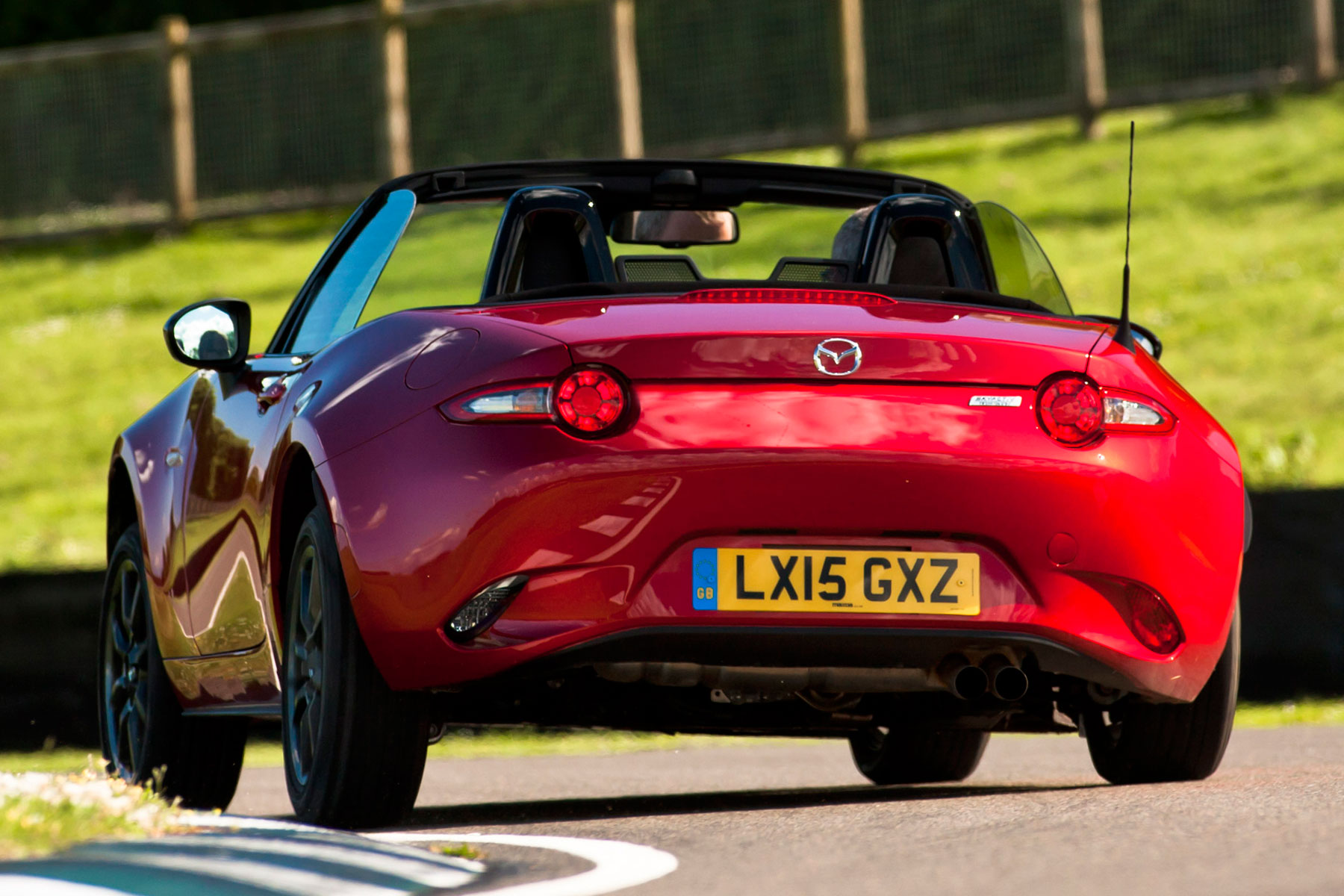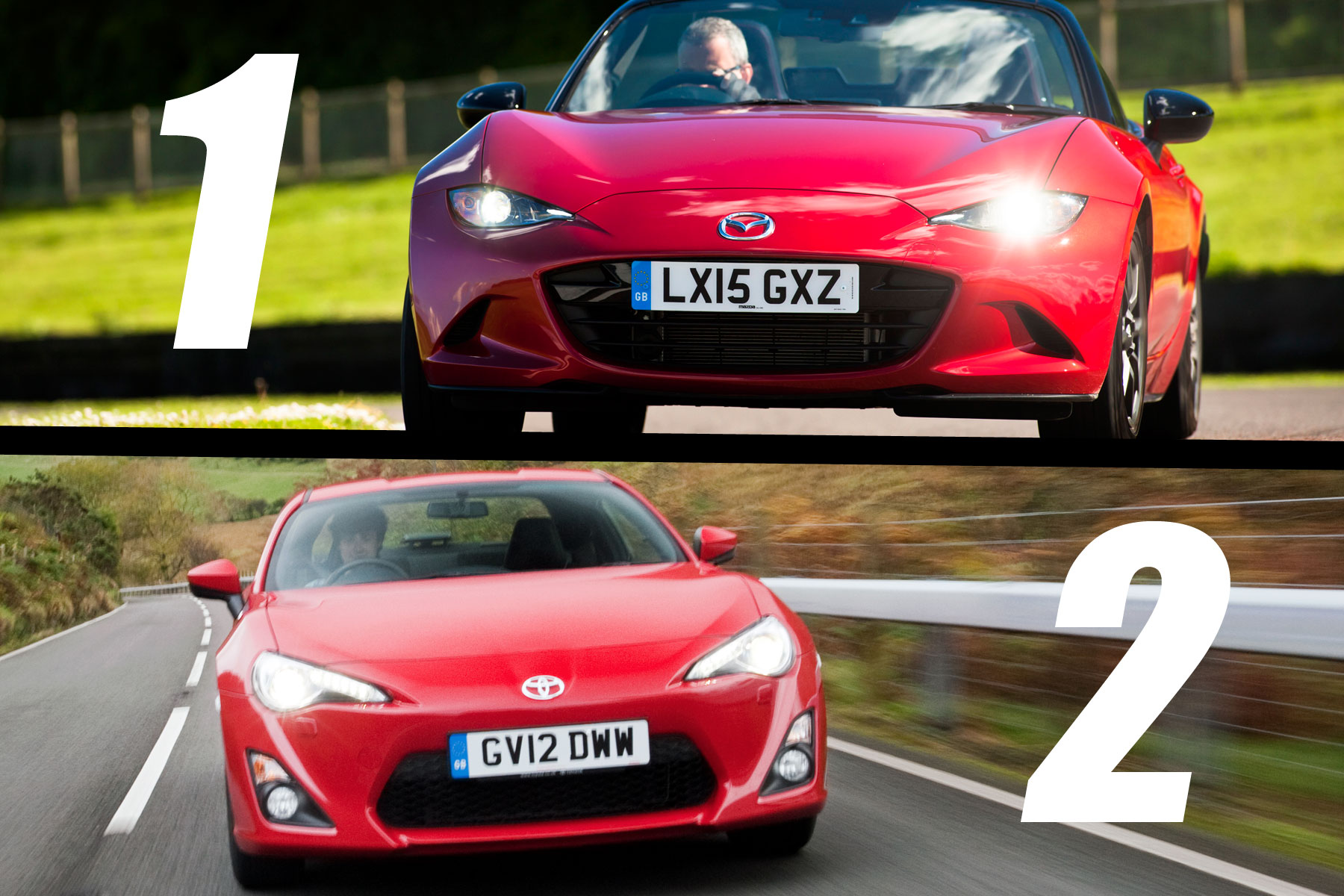Mazda MX-5 vs Toyota GT86
The Toyota GT86 has been around for a few years now, and has proved to be a controversial car. Many love its simple, modest-grip, rear-wheel-drive setup, while others fail to see past its lack of power and dated interior.
Buyers have certainly struggled to justify it against cheaper, faster hot hatches such as the Ford Fiesta ST, which goes some way towards explaining why sales have been so disappointing.
One car that has been overlooked as a rival to the GT86 is the Mazda MX-5. Despite being the world’s best-selling sports car, in recent times it has put on weight and (perhaps unfairly) developed an image as a fashion accessory rather than a true sports car.
That’s set to change with the launch of the fourth-generation Mazda MX-5, due on sale in the UK at the end of this month. The new model is 100kg lighter than its predecessor and shorter than any MX-5 ever – even the 1990 original.
We recently went to the Scottish Highlands to find out if it is now a serious driver’s car – but we also decided to put it head-to-head against the slightly more expensive Toyota GT86. Which will come out on top?
Toyota GT86: On the road
If we could award a star rating on driver experience alone, both of these would be five-star cars.
The Toyota GT86 feels like a much more exotic car than a twenty-something-grand coupe. You sit low, and the Milltek Sport stainless steel exhaust system fitted to our test car makes a pleasing burble on start-up.
The steering is heavy – bordering on too heavy when manoeuvring in tight situations. But that adds to the feeling that you’re driving something more akin to a supercar than a competitor for a hot Fiesta.
Once out on the road and past national speed limit signs, the GT86’s foibles (of which there are many, we’ll come to those shortly) are soon forgotten. Even with the wider 235mm Pirelli P Zero tyres fitted to the 18-inch alloys of our test car, there’s not an endless amount of grip.
That’s part of the GT86’s charm, though. It’s a refreshingly analogue car in a time of turbochargers and copious grip. The chassis is so communicative that you always know what’s going on. Not that you need to be a pro to drive one – after a bit of time with it, your confidence will increase. It’ll teach you a lot more about driving than an over-assisted hot hatch will.
At first, the GT86 feels slower than you might expect, particularly if you’re used to driving turbocharged cars. It lacks torque and putting your foot down at low to middle revs results in a lot of noise, but won’t pin you back in your seat. With peak torque at around 6,500rpm – just short of the redline – you really have to rev this engine to extract its best performance.
You soon get into this mindset, however. The six-speed gearbox is a fairly sweet unit, if a tad notchy, and a light flickers telling you when to change up. You soon get into a rhythm, exploiting its peaky power delivery and changing up just as you touch the redline.
If you drive the GT86 in this manner it’s unlikely to feel slow. It’s more than capable of overtaking slower traffic and you can soon be travelling very quickly. The low-down driving position and communicative steering add to the sensation of speed. Sure, a hot hatch might beat it in a drag race, but the GT86 is such a thrilling car to drive on normal British roads that you soon forget about the hard facts and figures.
Mazda MX-5: On the road
We’ll concentrate on the 2.0-litre Mazda MX-5 here as, although some argue the 1.5-litre is the sweeter unit, the bigger engine is the one closest to the GT86 in terms of both price and power.
Ah, power. If the GT86 feels lacking, you’d have thought the MX-5 would be in desperate need of a hot version – the 2.0-litre packs just 160hp.
But 160hp combined with a low 1,075kg kerb weight means it’s actually brisker than the GT86 – hitting 62mph in 7.3 seconds compared to the Toyota’s 7.7 seconds.
It accelerates in a similar way to the Toyota, with torque peaking high-up in the rev range at 4,600rpm. It’s an engine that loves to rev, but it does seem sprightlier than the Toyota – that 0.4 second gap to 62mph makes a surprising difference.
But straight-line acceleration isn’t what either of these cars is about. The MX-5’s compact dimensions make it feel nimbler than the GT86, while both are wonderfully communicative and feel like could be fairly tail-happy should you turn off the traction control systems.
The GT86 we had on test was fitted with 40mm lowering springs, so provided a firmer ride than a standard version. The MX-5, however, provided a surprisingly compliant ride, only getting unsettled by the harshest of bumps.
That’s always been the delight of the MX-5. Not only is it extremely entertaining if you push it hard, it’s also very happy being driven at low speeds. In that way, it’s probably an easier car to live with every day than the more focussed GT86.
Toyota GT86: On the inside
As good as the GT86 is to drive, it’s as let down by its interior. It feels like a Toyota from at least 10 years ago – with lots of dark, hard plastics making the cabin feel quite claustrophobic.
It’s more practical than the MX-5 – it’s got rear seats, for a start, although they really are only a token gesture for young children. There’s plenty of stowage space, too – something the MX-5 is seriously lacking in.
Toyota says its interior has been designed with a lightweight ethos in mind – pointing out its frameless rear-view mirror as an example of where weight has been saved. But you find yourself asking if this is just an excuse for penny-pinching.
Standard equipment is lacking. There’s no DAB radio (although it is ‘DAB-ready’, says Toyota). It’s amazing how much you take things like hill-hold assist and stop-start for granted – and having to take your hands off the steering wheel to change the volume of the radio feels very old-fashioned.
Our test car was fitted with the optional Touch and Go satellite navigation system. It’s a clumsy, old-fashioned unit that even looks a bit aftermarket. For the £750 Toyota asks, we’d recommend swerving it in favour of a TomTom on the windscreen. Old-fashioned, for sure, but so is the car.
The GT86’s interior does have a few saving graces, however. The bucket seats not only look great and provide plenty of support, they’re also surprisingly comfortable. We also particularly like the steering wheel… a minor thing, perhaps, but one that does make a big difference to the overall driving experience. At 365mm, it’s particularly small, making it easy to extract the best out of the sporty Toyota. The chrome sports pedals are also nicely placed for enthusiastic drivers.
Mazda MX-5: On the inside
Considering Mazda has also gone hard on the lightweight ethos, the MX-5’s interior is much more pleasant than the GT86’s. It will also look familiar to anyone who’s spent time in the latest Mazda 2 or CX-3.
It feels very modern, with bits of chrome giving it an upmarket feel and red stitching adding to its sportiness. The sat nav is easy to use, while the prominent rev counter emphasises the MX-5’s rev-hungry nature.
It’s only when you look really closely that you notice minor weight-saving measures, such as the lack of padding on the sun visors. Overall, though, it’s not detrimental to the driver or passenger’s comfort – which is impressive considering how much weight they’ve managed to cut on the new model.
One thing it does lack is storage space. There are no door bins, the cup holders are flimsy removable items, and there is no glovebox. A minor gripe on the face of it, but it does irritate when you struggle to find somewhere even to put your mobile phone.
If you can cope with the compact nature of the MX-5’s interior and don’t mind the lack of storage, it runs rings around the GT86 here.
Toyota GT86: Running costs
The old-fashioned nature of the GT86’s engine, combined with the fact you will thrash it anywhere, means it’s not particularly efficient. Officially, it returns 36.2mpg on the combined cycle, but do expect this to drop significantly.
CO2 emissions of 180g/km mean you’ll pay £225 a year in road tax (£350 in the first year), while if you’re looking at one as a company car you’ll be paying a BIK tax rate of 31%.
Traditionally, though, Toyotas are extremely reliable. This means you shouldn’t suffer many of the unexpected costs you might associate with sports cars.
Mazda MX-5: Running costs
The 2.0-litre high-compression Skyactiv engine in the MX-5 returns 40.9mpg on the combined cycle, while emitting 161g/km CO2. That puts it into the ‘G’ tax band, resulting in £180 tax for the first year, and the same for following years.
Like Toyota, Mazda has a reputation for reliability, so we wouldn’t be worried about owning one when it’s out of warranty (after three years compared to the Toyota’s five).
Neither should be costly to run, providing you’re not expecting diesel-like economy. Without resorting to the ‘smiles per gallon’ cliche, both cars offer an awful lot of fun for relatively affordable running costs.
Mazda MX-5 versus Toyota GT86: Verdict
If you’re serious about driving, neither the Toyota GT86 or new Mazda MX-5 will disappoint, despite their relatively modest power.
The MX-5 is a much more sorted package. It seems easier to live with, and its interior, although not as practical as the Toyota’s, feels of much better quality.
It’s also nimbler and offers more fun at low speed. The little roadster is just as happy on city streets as being pushed to its limits on track.
The Toyota GT86 feels, and looks, more special. It’s a more focussed car to drive, and its poor sales mean it still turns heads three years after its launch.
Like past models of the MX-5, we expect the fourth generation will soon become a victim of its own popularity, appearing across the UK quicker than you can fold its manual soft-top roof down.
For most buyers, the Mazda MX-5 makes a lot more sense than the Toyota GT86. It’s cheaper, faster and has a much nicer interior. Handling is on par with the Toyota, and the Mazda also has that added boon of being able to go topless.
Are we saying don’t buy the GT86? Not at all. If you can make the GT86 work for you, it’s a purchase we’d fully respect. It feels more special than the MX-5 and is likely to stay rare for longer. Don’t let it’s relative lack of power bother you, but that interior is a sacrifice you’ll have to justify. Many will find that difficult.
Specification: 2015 Mazda MX-5 2.0
Engines: 2.0-litre petrol
Prices from: £20,095
Power: 160hp
Torque: 148lb ft
0-62mph: 7.3 seconds
Top speed: 133mph
Fuel economy: 40.9mpg
CO2 emissions: 161g/km
Specification: 2015 Toyota GT86
Engines: 2.0-litre petrol
Prices from: £25,000
Power: 200hp
Torque: 151lb ft
0-62mph: 7.7 seconds
Top speed: 140mph
Fuel economy: 36.2mpg
CO2 emissions: 180g/km
